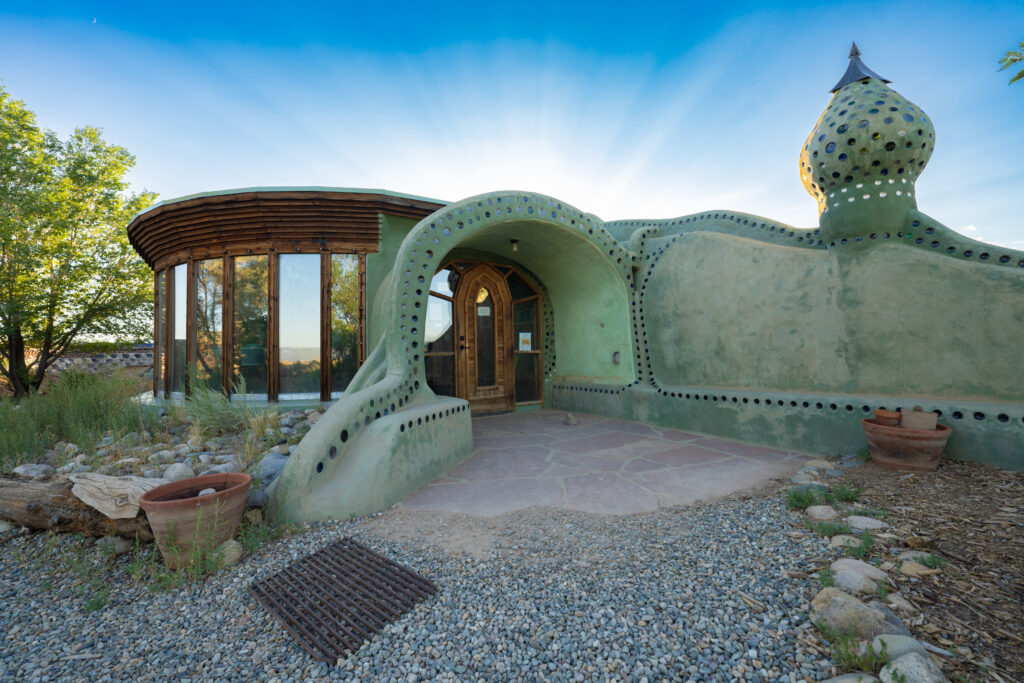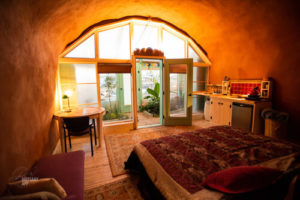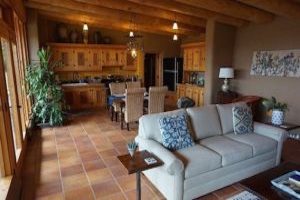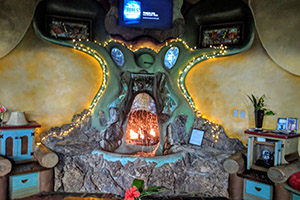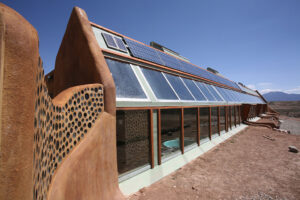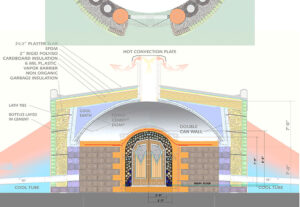
1970
It all really started…
with a house I built out of the old steel beer cans in the early seventies. It was inspired by a tv news report on the Walter Cronkite news broadcast. They were talking about beer and soda cans being thrown all over the countryside. They predicted a garbage problem in the future. Looks like they were right – we are drowning in our own garbage right now.
On the same show they talked about clear cutting timber in the northwest for housing . They predicted, environmental damage caused by clear cutting in addition to skyrocketing wood prices resulting in super expensive housing in the future. All have come to pass. The word “homeless” has taken on a whole new meaning in today’s world.
So, shortly after the news show, I found myself designing a building block made of beer cans. I figured this would both find a use for the cans so they wouldn’t be tossed out; and it would reduce the need to cut trees for housing.
While having a drink in a Taos, New Mexico bar, I told an older engineer friend about the idea. He called me a disgrace to the architectural community and got up and stormed out.
I went on to build the building made of beer can blocks. The Denver Post did a front page article on the world’s first can house. They called me an architect when in fact I was still taking the exams in the state of New Mexico. My license was held up for two years as punishment for allowing this to happen.
Michael Bailot (above) helped build the first BEER CAN HOUSE. We also played music.
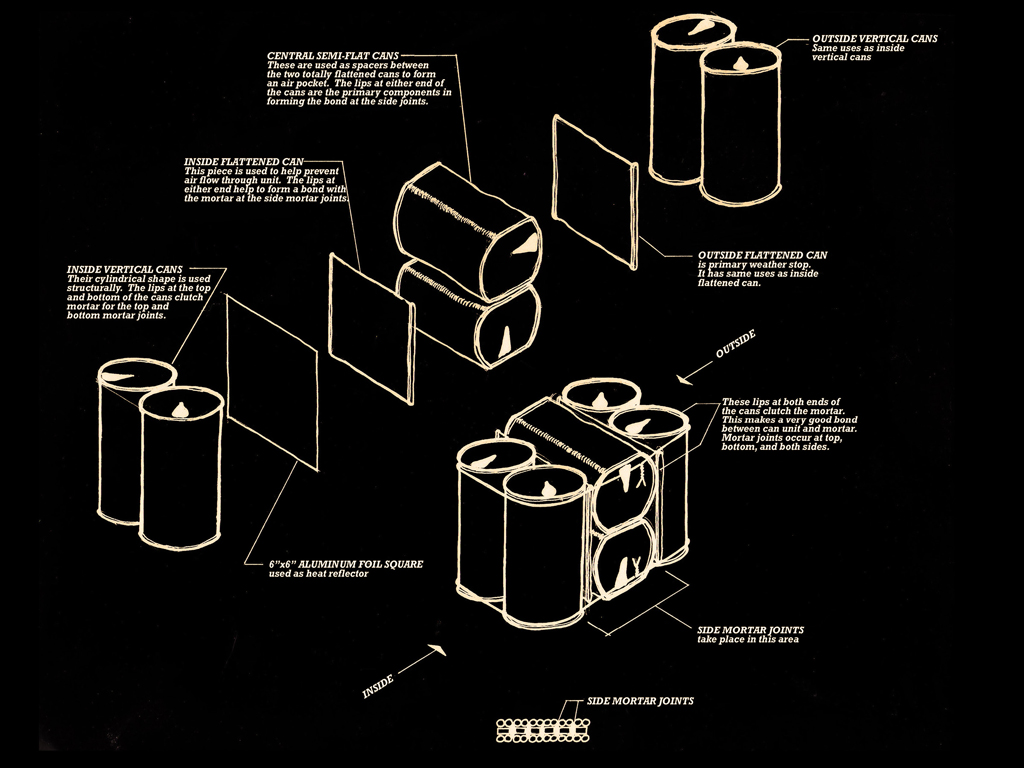

Continental Can Company financed the construction drawings for the first BEER CAN HOUSE. They flew me to Chicago and I sat around a huge conference table in the Hancock Building to talk about it. They said they would finance the construction of the building as well. I obtained a “show only” building permit and took out a bank loan to start construction while waiting for the funds from Continental Can Company. They never came. They flew me back to Chicago to tell me that their lawyers advised them against financing the house as there were no “can layers” unions and in addition, cans were not made for building so they ran a risk of getting sued. My first step into the shit of dogma.
I went to my lawyer and friend, Steve Natelson, to try and get the can company to live up to its commitment. When he found out I was building the house for $11K, he decided to buy it himself. He sold it for a big profit. It has sold several times since then, each time for a profit, and is still standing today.



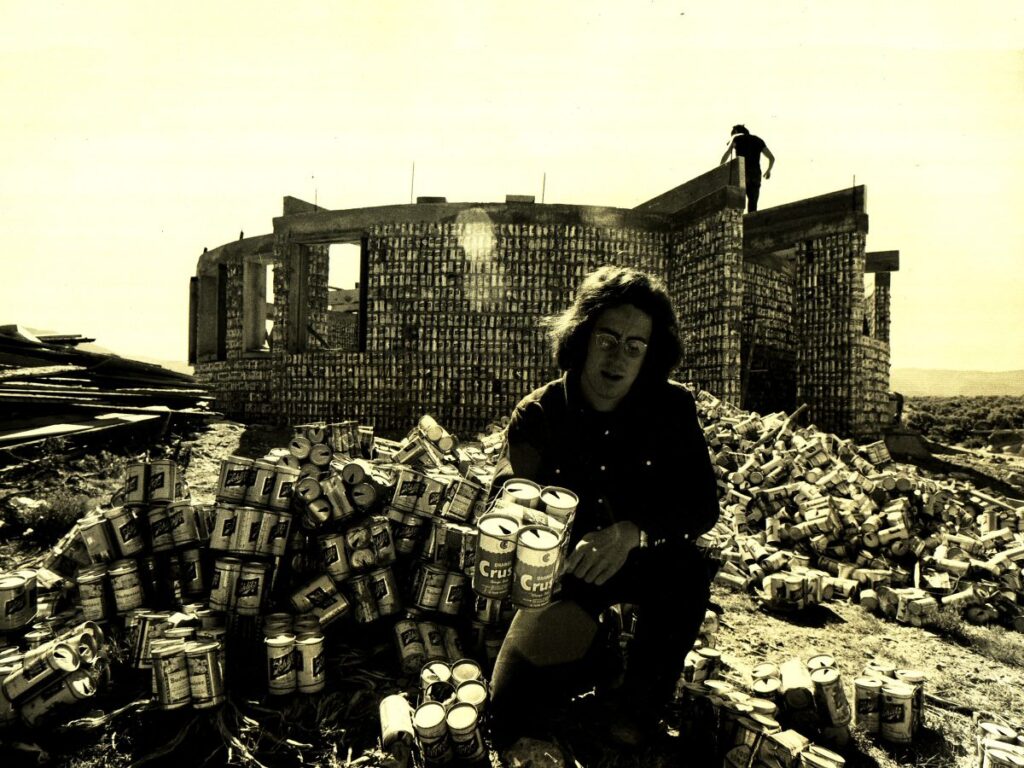
Ed Paul (adjacent) also helped build the first BEER CAN HOUSE. Pictures of this house along with Ed, Michael Bailot, Steve Natelson or myself appeared in over one hundred newspapers around the country and world. This was the beginning of literally volumes of media coverage of our recycled and later sustainable buildings that eventually evolved into the EARTHSHIP. In the early seventies, this was considered kind of a joke with a lot of the media. Few realized the future relevance of this kind of thinking. This building was also in a semi-permanent exhibition in the Louvre Museum in Paris called Urbanism Architecture 2 in the late seventies. Today, in 2008, this building is on display in the Canadian Center for Architecture in Montréal – an exhibit on the response of architecture to the first glimpse of earth changes and fossil fuel limits. They also featured it in a book called “SORRY OUT OF GAS”.
Garbage did not exist until there were humans. Everything in nature easily goes back into the earth. Humanity needs to learn to re-consume.
Garbage could cease to exist again.



